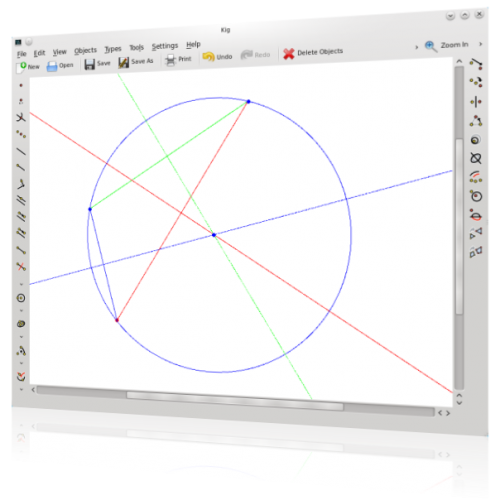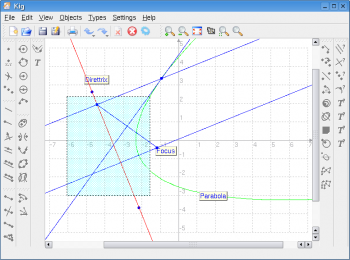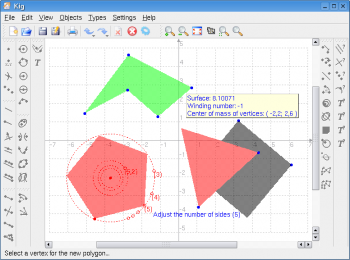Kig: Difference between revisions
(Added Special:myLanguage, removed emphasis in links) |
(Removal of a not informative part) |
||
| (One intermediate revision by one other user not shown) | |||
| Line 21: | Line 21: | ||
<!--T:6--> | <!--T:6--> | ||
'''Kig''' is a useful and powerful utility for high school students and teachers, and as a fun project | '''Kig''' is a useful and powerful utility for high school students and teachers, and as a fun project as well. We have learned a lot by working on it, and it's fun to work together with other people on it. | ||
==Features== <!--T:7--> | ==Features== <!--T:7--> | ||
| Line 37: | Line 37: | ||
<!--T:10--> | <!--T:10--> | ||
See [[Kig/Screenshots|more screenshots...]] | See [[Special:myLanguage/Kig/Screenshots|more screenshots...]] | ||
Latest revision as of 18:16, 3 December 2012
Home » Applications » Education » Kig
| Kig is a program for exploring geometric constructions. It is part of the KDE Education Project. |

Kig is meant as a better replacement for such free programs as KGeo, KSeg and Dr. Geo and commercial programs like Cabri.
Kig is a useful and powerful utility for high school students and teachers, and as a fun project as well. We have learned a lot by working on it, and it's fun to work together with other people on it.
Features
Screenshots
 |
You can select objects by drawing a box. Give each object a suitable name. |
 |
Kig has a tool for drawing regular polygons. Arbitrary polygons are supported, too. |
Documentation
Kig Macros
Since Kig can import and use third-part macros as built-in objects, it can have new objects, being more and more powerful.
If you don't know how to import a macro, please read the FAQ.
